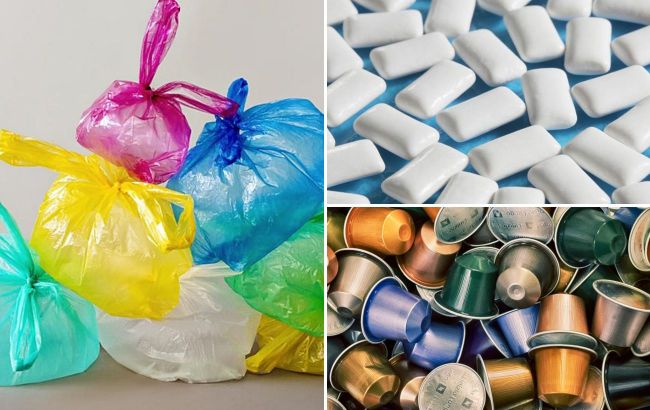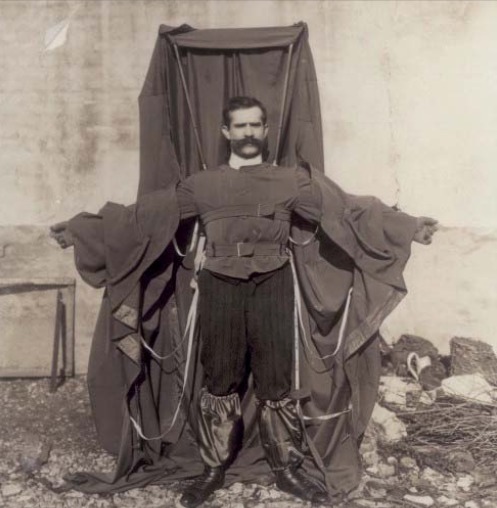10 worst inventions in history: From chewing gum to coffee capsules
 10 worst inventions in the history of humanity (collage: RBC-Ukraine)
10 worst inventions in the history of humanity (collage: RBC-Ukraine)
Not all inventions in our world are characterized by thorough research and practical utility. Some of them either do not meet their intended purpose or prove to be entirely useless.
10 worst inventions in history, according to the British popular science magazine BBC Science Focus.
Parachute coat
The author of this concept was a tailor named Franz Reichelt. In 1912, he decided to test his invention personally by making a jump from the lower level of the Eiffel Tower in Paris. Unfortunately, his idea was not successful, and the inventor perished.
Nevertheless, thanks to such innovative ideas, wingsuits (special suits with wings for BASE jumping) and ejection seats for pilots emerged.

Parachute coat by Franz Reichelt (photo: Wikipedia)
Coffee capsules
In reality, they turned out to be incredibly wasteful. Even their creator, John Sylvan, regrets his invention.
Studies show that the annual global footprint produced by capsules is over half a million tons. They take 500 years to decompose.

Coffee capsules (photo: Unsplash)
Three-wheeled electric bicycle Sinclair C5
Its height was only 80 centimeters. This vehicle stood out with its low design compared to other cars. Despite these characteristics, it was positioned for use on roads.
However, due to its limited range of 32 kilometers and a maximum speed of 24 km/h, few dared to use it, despite advertising efforts.
Nevertheless, this ahead-of-its-time invention underscores the BBC. If the Sinclair C5 were released today, it could have much more success.

Three-wheeled electric bicycle Sinclair C5 (photo: The Guardian)
Pop-up advertising
It's hard to believe, but Ethan Zuckerman invented it to help, not to hinder. Later, he apologized for his invention, stating that his "intentions were truly good."

Pop-up advertising on the desktop (photo: Engadget)
Hydrogen airships
Accidents involving them were quite common, but the explosion of the Hindenburg in 1937, which resulted in the deaths of 36 people, abruptly ended the era of airships.

Hydrogen airship (photo: Wikipedia)
SEGA Dreamcast
Many still associate the name SEGA with memories of late nights dedicated to trying to beat Sonic the Hedgehog before bedtime. However, due to the lack of third-party games and the successful release of Sony's PlayStation 2, the SEGA console could not achieve success.

SEGA Dreamcast (photo: GameStop)
Chewing gum
One of the key components in modern chewing gum is polyvinyl acetate, a type of plastic that is challenging to remove if it gets on shoes or sidewalks. Fortunately, new types of chewing gum without this component are emerging.

Chewing gum (photo: Wikipedia)
Betamax videocassette format
It had better image quality compared to the VHS competitor but was more expensive. The price ultimately determined its fate.

Betamax videocassette (photo: Wikipedia)
Plastic carry bags
Engineer Sten Gustaf Thulin envisioned people reusing these products multiple times. In reality, they turned out to be nearly indestructible, but not for the better, rather for the worse.
Some studies predict that by 2050, there will be more plastic bags in the oceans than fish. Meanwhile, the decomposition of these materials takes centuries.

Plastic bag on the beach (photo: Pixabay)
Apple Newton MessagePad
Paper and pen are a classic combination. However, in the early 1990s, Apple decided to bring a modern approach to this traditional duo.
The problem associated with the use of the tablet was its high cost and, predominantly, limited functionality. Handwriting recognition proved to be inefficient.

Apple Newton MessagePad (photo: Science Museum Group Collection)

